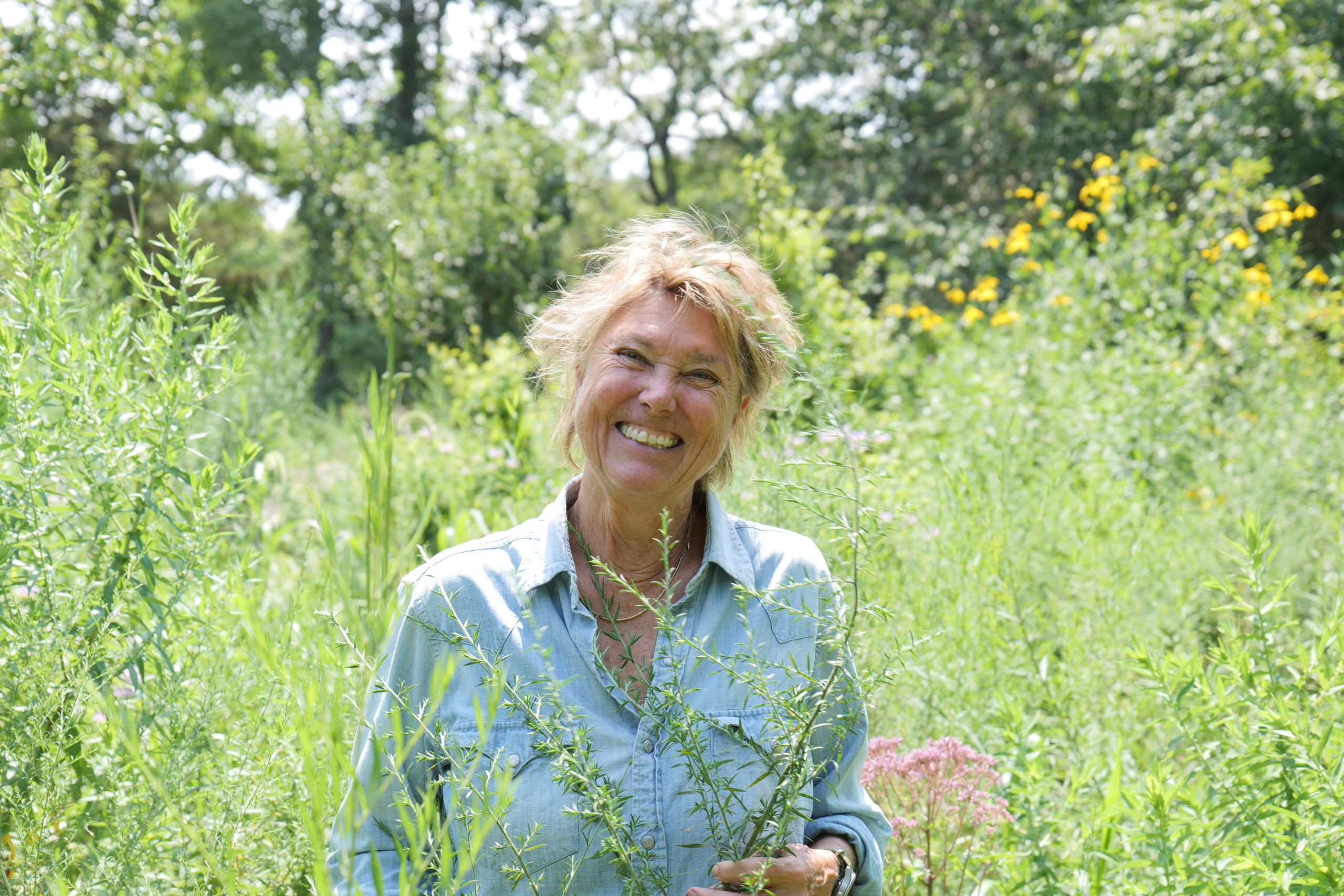
Have you noticed fewer robins in your garden? Maybe you’ve seen that the crowds of crows in fields look a bit smaller. Or that the swans in the duck pond look a bit lonely. Since the 1970s, the bird population of North America has declined dramatically, to the tune of a net loss of 2.9 billion breeding birds, according to a 2016 article in the journal Science. That’s almost a third of their population. But there’s a way for the average gardener to help, says Edwina von Gal of the Perfect Earth Project.
“Two Thirds for the Birds is our initiative to engage the — especially the professional design community — in designing landscapes that meet the minimum requirements of the Earth. Because if you’re not, you’re part of the problem,” Ms. von Gal said on a sunny day in her garden at Marshouse, her personal home as well as the base of the Perfect Earth Project, in Springs.
The “two-thirds” aspect of the title refers to the main practice that the initiative encourages everyone to adopt: Two out of every three plants put in ground should be native species.
Much of the thought process behind the initiative comes from the work of University of Delaware professor Doug Tallamy, an entomologist whose research showed that the best way to protect birds within human-dominated landscapes is to create habitats for them by planting native species. The other part of the two-thirds pledge is to discontinue using pesticides, another cause the Perfect Earth Project champions, as it is one of the two main reasons for bird population decline (habitat loss being the first).
Most of the birds lost are everyday, local species.
“If you think about it, it makes total sense, because where are we destroying habitat the most rapidly? In the places where everyday birds live, which is grasslands, the places where humans live,” Ms. von Gal said. “What’s the easiest place for us to live? Not a remote forest where a really small population of unusual birds live, [but] right here, where the chickadees and the cardinals live. And we’re destroying them by planting nonnative plants … we’re basically creating spaces that do not feed any life on Earth.”
Of course, the bird decline doesn’t just affect birds. It has impacts across the whole environment and is merely symptomatic of a larger problem. To this point, Ms. von Gal explained the interconnectedness of the food web. For example, the primary food source for baby birds is caterpillars and other insects. Humans inadvertently kill off this bird food by spraying pesticides, which affects the bird population and interrupts the whole cycle.
“The birds are also — just as they always have been — they’re a key indicator species. They’re the canaries in the coal mine. They’re telling us something: There’s something seriously wrong here, and we’re disappearing right in front of you, and nobody’s really noticing … it’s a cascading thing,” Ms. von Gal said.
Other steps individual gardeners can take to turn their lawns and green spaces into mini-refuges for wildlife are to let grass grow longer, avoid spraying lawns for ticks — spray yourself instead! — remove invasive species and keep biomass like twigs and wood within the garden as compost sources. Other additions that can be helpful are two structures: birdbaths and “bee beaches.”
“Habitat is food, shelter, and water,” Ms. von Gal said. “Water is a really important component of making a habitat garden. … Most native plants provide the food and shelter. Shelter is a safe place to build a nest and raise your kids and oftentimes that shelter has berries, or bugs, right outside the door. Water becomes important when the weather is dry or if it’s frozen in the winter, so having a birdbath is a really wonderful way to watch birds and provide them with an essential.
“And ‘bee beaches’ are just something I made up. Because bees have really short legs, and they can’t swim, so they need to walk up the edge [of the water] on something that’s not all slippery and unfriendly. So I started making these troughs with mud — a lot of [bees] use mud to make nests and they like it — and soil or sand with stones and things. If you’ve ever been to a waterfall that has a lot a mist, you’ll see a bunch of butterflies, because the butterflies can sip off the rocks, and it’s the same thing. You know, [bees] can’t just go drink out of a big jug of water, they need a place where they can get the little sips.”
An exhibition, in partnership with R & Company, of birdbaths and bee beaches by artists Rogan Gregory, Serban Ionescu, Hun-Chung Lee, Nancy Lorenz, John-Paul Phillippe and Katie Stout are on now display at Marshouse.
“I will say, from an artist’s perspective, it’s probably one of the hardest things I’ve had to come up with,” Mr. Gregory, who was working on installing his works in the garden, said of making his birdbath sculptures. “A birdbath is not that complicated — it can be a stone with a depression in it, that’s it. [It’s hard if you want to] express yourself as an artist.”
Ms. von Gal emphasized that a simple change can make a big impact for the birds and the environment: “You don’t have to change the garden you’ve got, unless you have invasives. … Going forward, you just say for every three plants, two are going to be native, and that’s all you have to do.”
More information can be found at 234birds.org or on Instagram at @234birds. Marshouse Gardens, at 962 Springs Fireplace Road in Springs, is open for visitors Thursdays through Sundays by appointment.